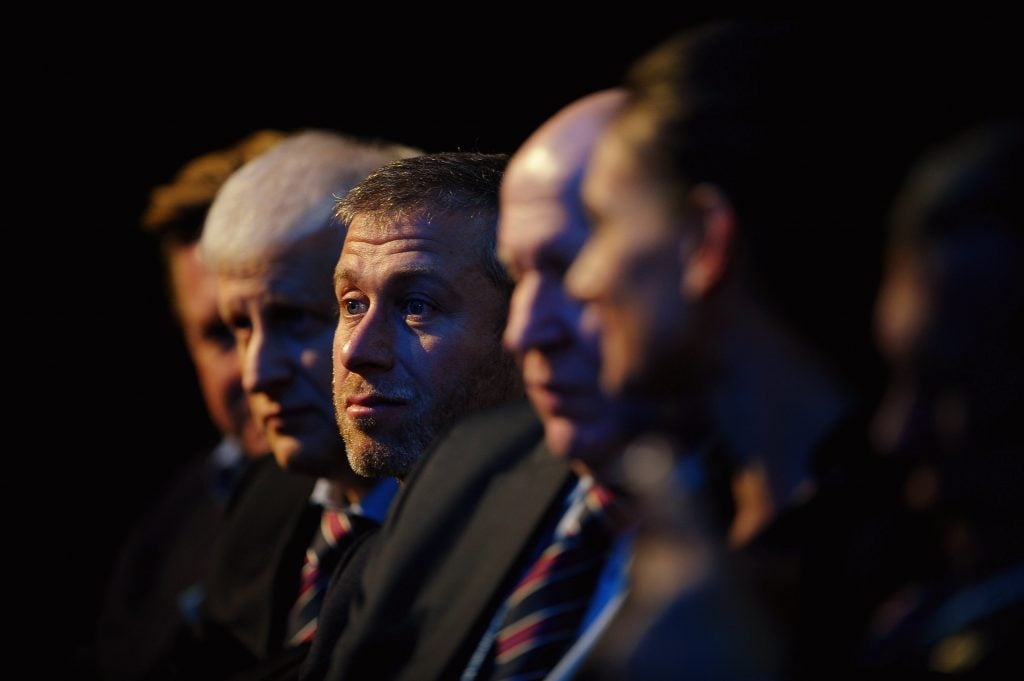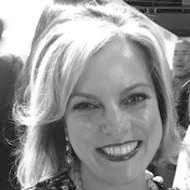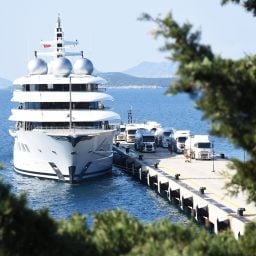The Art Detective is a weekly column by Katya Kazakina for Artnet News Pro that lifts the curtain on what’s really going on in the art market.
Art collector Igor Tsukanov’s foundation has been working on a retrospective of Russian nonconformist artist Oleg Tselkov in Moscow for three years. After a pandemic-induced delay and the artist’s death, at 87, in July, the opening was finally set for March 1 at the Moscow Museum of Modern Art. Six days before the debut, Russia invaded Ukraine.
In the weeks that followed, bombs rained down on Kyiv and the world came together to cut off Russia, its financial institutions, and its oligarchs. In Moscow, private museums closed their doors. Many cultural elites fled abroad, fearing persecution.
Despite Russia’s deepening isolation, “Oleg Tselkov: Stranger” opened, with 100 paintings from 25 private international collections, arriving by air from New York and Florida and by truck from Europe. Tselkov, a pioneer of Soviet unofficial art, has a large following in Russia and abroad. In December, his Boy with Balloons (1957) fetched a record $760,612 at Sotheby’s.
While well-attended, the opening didn’t feel celebratory, Tsukanov said. A U.S.-based couple with Ukrainian roots, who lent two paintings to the show, asked to withdraw them as a protest against the war. (They ended up agreeing to keep the paintings but removed their names.) Some guests cried.
“People understood that it would be the last opening for a while,” Tsukanov told me this week from his home in London.
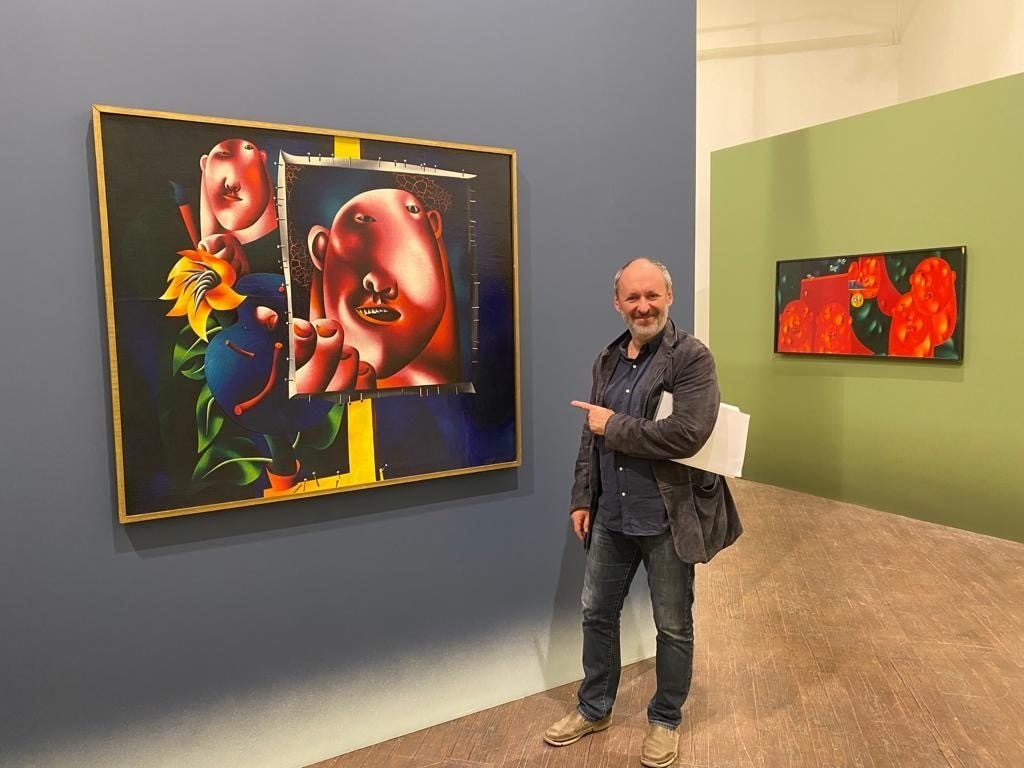
Collector Igor Tsukanov at the opening of “Oleg Tselkov: Stranger” at the Moscow Museum of Modern Art. Courtesy: Igor Tsukanov.
A New Reality
As the war in Ukraine entered its fourth week, Tsukanov was processing a new reality. A former banker with dual U.K. and Russian citizenship, he saw his European bank accounts restricted overnight even though he hasn’t been sanctioned. A significant promoter of Russian art, he won’t be staging exhibitions in London anytime soon, Tsukanov told a group of art-market executives at an offsite “brainstorming” event organized by Christie’s Russian art department last week.
Some of Tsukanov’s compatriots are in a much tougher spot. Russian billionaires sanctioned by the U.S. or U.K. include several of the world’s top collectors: Roman Abramovich, Petr Aven, and Andrey Melnichenko. They can’t officially buy or sell any art, and auction houses have said they aren’t doing business with sanctioned individuals.
The trade of Russian art has also become much more difficult. Sotheby’s, Christie’s, and Bonhams cancelled their upcoming Russian art auctions in London, the sector’s epicenter.
“For now, everything is on hold,” said Jo Vickery, co-founder of Vickery Art, a London-based advisory, and former international director of Russian art at Sotheby’s.
A major force in the market in the early 2000s, Russian millionaires and billionaires set records for everything from Fabergé to Freud, traveled in droves to Art Basel Miami Beach, and joined the boards of major museums such as Guggenheim and Tate.
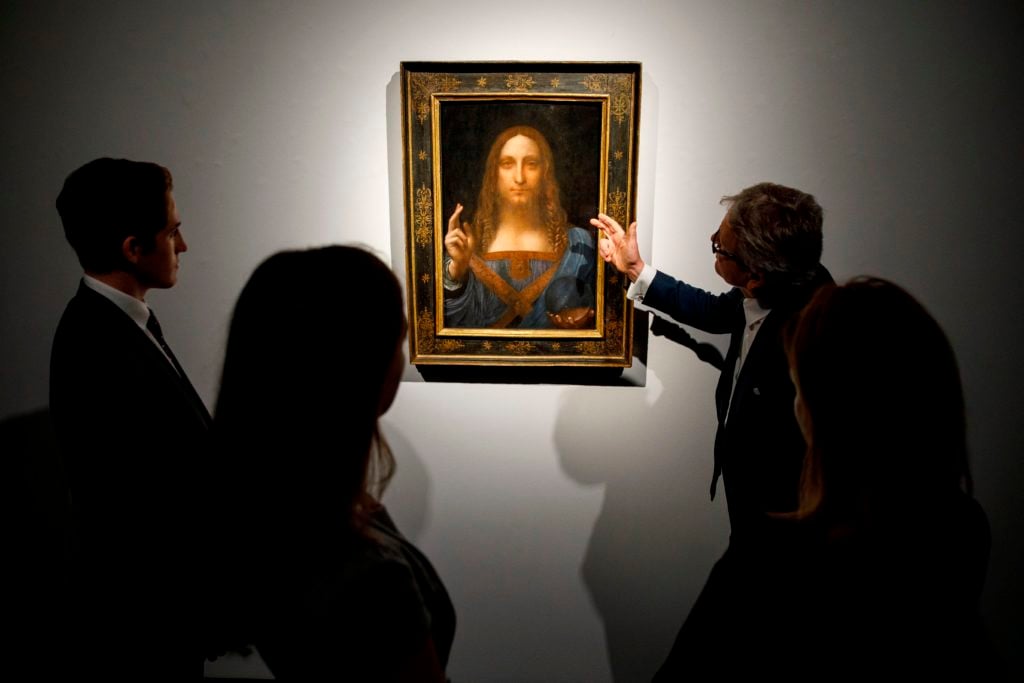
Christie’s employees pose in front of Leonardo da Vinci’s Salvator Mundi ahead of its sale at Christie’s New York on November 15, 2017. Photo: Tolga Akmena/AFP/Getty Images.
Dmitry Rybolovlev, a Russian billionaire who hasn’t been sanctioned, spent about $2 billion on blue-chip art between 2003 and 2014, paying outrageous amounts for works by Gauguin, Klimt, and Rodin. While he’s since sold many of the works at a loss, one of them exceeded all expectations in 2017: Leonardo da Vinci’s Salvator Mundi, which fetched $450 million, the most expensive artwork of all time.
Russian collectors’ influence waned after the financial crisis and the first round of sanctions stemming from Russia’s annexation of Crimea in 2014. Things started to turn around in 2018 as a new generation of collectors turned their attention to contemporary Russian art. Annual sales at Vladey, a Moscow-based auction house cultivating this audience, rose from 500,000 euros in 2013 to 6 million euros in 2021. Then the war began.
“People are dying,” said a Russian-born, U.S.-based art collector. “Who can think about art?”
Fear of repression is widespread among elites as Vladimir Putin’s regime becomes ever more authoritarian, shutting down independent media, making the word “war” illegal, and banning social media platforms like Instagram. This week, Putin called for “self-cleansing” from traitors who earn money in Russia but live in the West and are poisoned by Western values.
The Russian art market “will undoubtedly experience a transformational period of change, the extent of which will depend on how isolated Russia remains in the future,” Vickery said. “The impact on the contemporary art market will be minimal. Today there are buyers all over the world—in Asia, America, Europe—all competing.”
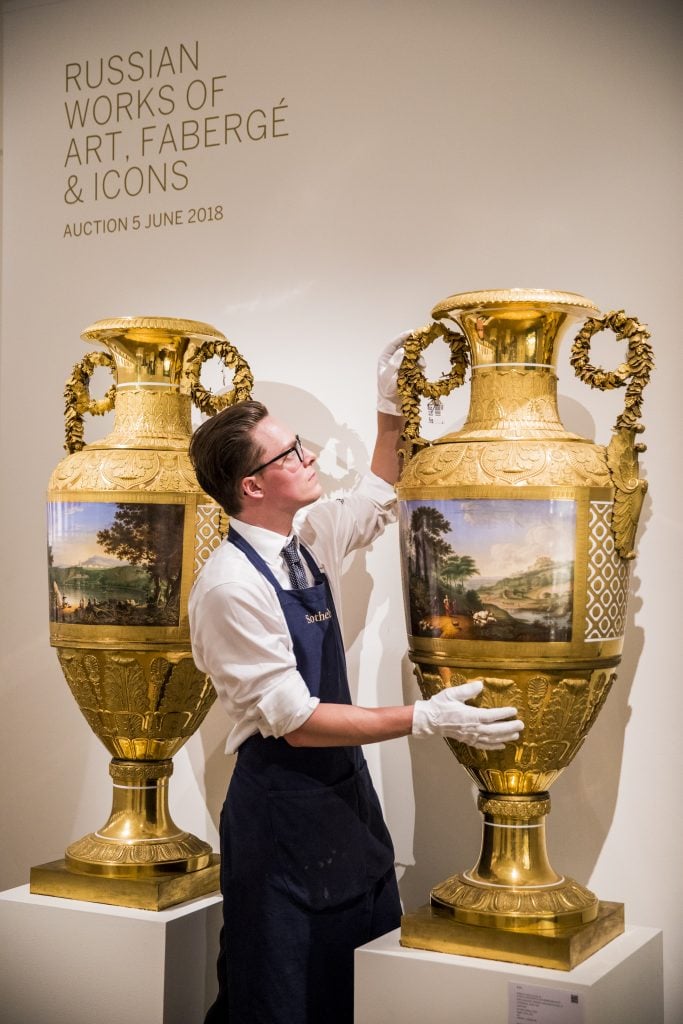
Sotheby’s Russian Pictures and Russian Works of Art sales at Sotheby’s on June 1, 2018 in London, England. (Photo by Tristan Fewings/Getty Images for Sotheby’s)
To be sure, the market for Russian art is a drop in the bucket. Experts estimate it is worth between $50 million and $80 million annually—equivalent to at most 0.16 percent of the $50.1 billion in global art sales in 2020, according to the UBS art market report.
Meanwhile, sales of Russian contemporary art at auction, almost nonexistent in the market for years, surpassed $15 million in 2021, Vickery said—but this sum remains a tiny portion of the contemporary art market. Meanwhile, Russian galleries haven’t presented at major art fairs Art Basel and Frieze for years.
“We’ve been stagnating and isolated,” a Moscow-based dealer said.
The Rise and Fall of Russian Collectors
Russian collectors burst onto the global scene about a decade after the collapse of the Soviet Union. At first, the focus was to expatriate Russian treasures back to Russia. In 2004, Viktor Vekselberg, who was recently sanctioned, paid about $100 million for nine imperial Fabergé eggs from the Forbes family collection. Three years later, the 450-piece art collection of cellist Mstislav Rostropovich, estimated at £20 million at Sotheby’s, was snapped up privately in the eleventh hour by Alisher Usmanov, another newly sanctioned billionaire.
As their taste expanded, Russians began buying Western art. In 2008, Melnichenko paid record prices for paintings by Monet, which were said to be housed on one of his two mega-yachts. Abramovich dropped $86.3 million for Francis Bacon’s Triptych and another $33.6 million for Lucian Freud’s Benefits Supervisor Sleeping. Both were records at the time.
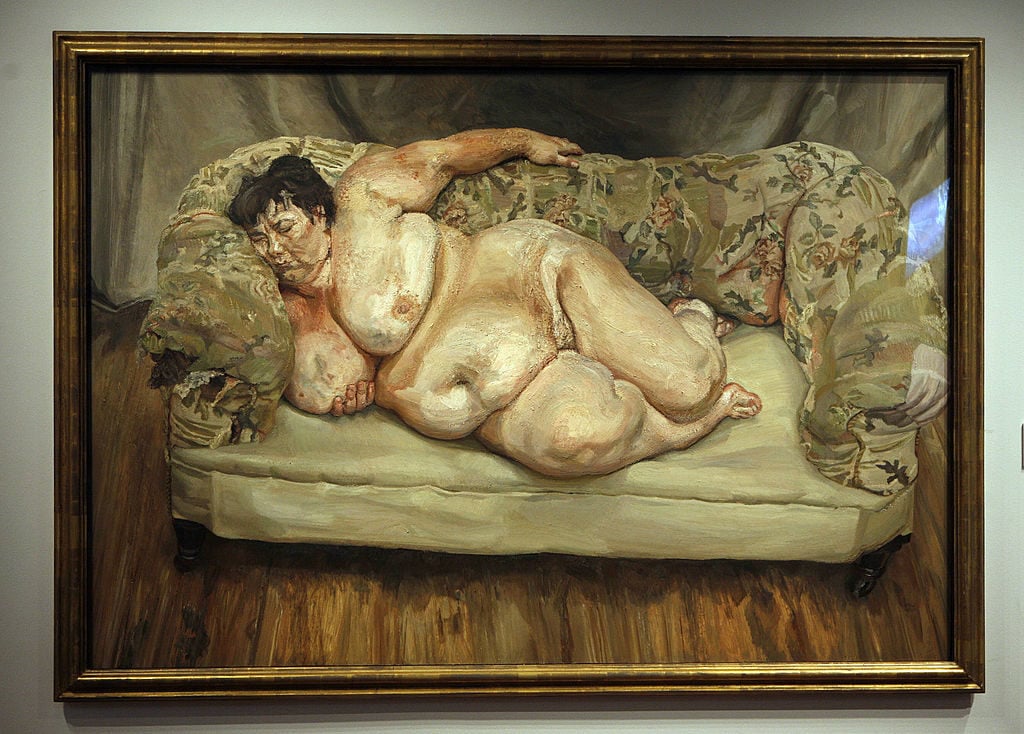
Lucian Freud’s Benefits Supervisor Sleeping (1995). Photo: Emmanuel Dunand/AFP/Getty Images.
Major auction houses used to ship their top lots to Moscow for previews. Gagosian gallery staged two buzzy pop-up exhibitions there in 2007 and 2008, one coinciding with Lehman Brothers’ collapse. “Everything sold out,” said a Russian-born collector, who bought a Jeff Koons.
But the love story didn’t last. After the financial crisis, many Russian collectors realized they had bought subpar Western contemporary works or paid inflated prices, said the Moscow dealer. While legendary early 20th century collectors Sergey Schukin and Ivan Morozov built some of the best collections of Western avant-garde art, “there isn’t a single Russian collection now to rival, say, [Christie’s owner François] Pinault’s,” the dealer said.
They continued buying Impressionist and Modern art, according to Vickery, competing for works by Chagall, Kandinsky, and Soutine with international buyers. “Their absence will be felt, but it won’t be such a big cut,” she said.
They also continued to invest in Russian art. Together with his ex-wife Dasha Zhukova, Abramovich bought a definitive trove of works by Russian-American artist Ilya Kabakov for a sum thought to be as high as $60 million.
Aven built a significant collection of Soviet porcelain created between 1917 and 1941 alongside Russian avant-garde masterpieces. In early February, the Art Newspaper reported his plans to open a private museum in Riga, Latvia, in 2025.
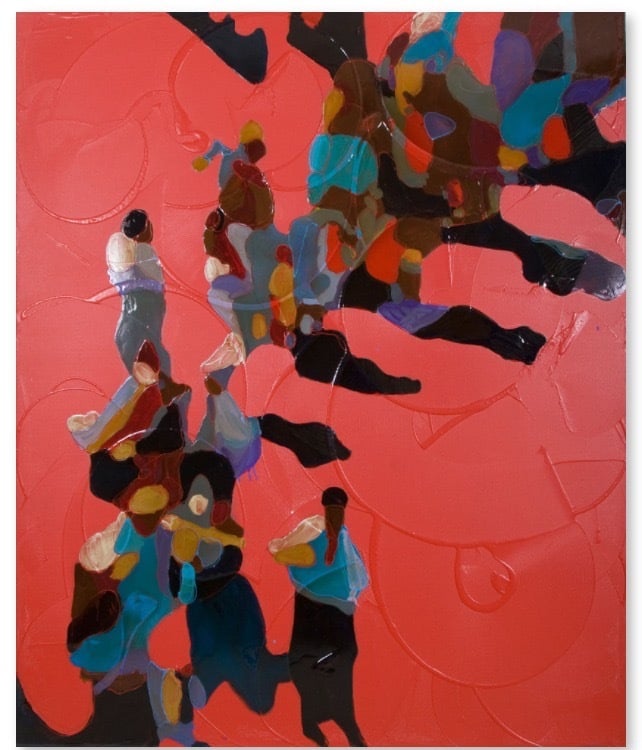
Oksana Mas, Exodus, Red Expression. Courtesy of Igor Tsukanov.
Looking Ahead
Since the war began, London-based Tsukanov has been asked by the Moscow Museum of Modern Art to extend the Tselkov exhibition. “There aren’t any new projects,” he said.
He’s also been contributing to charities for Ukraine. Oksana Mas, who studied art in Odessa and represented Ukraine at the Venice Biennale in 2011, asked Tsukanov to help her sell about 50 paintings from her own inventory. She wants to use the proceeds to help Ukrainian refugees, he said.
“I wasn’t at all sure how it’s going to go,” said Tsukanov. “But I’ve been pleasantly surprised by the enthusiasm.” He already sold £400,000 worth, and the campaign continues.
He started contemplating an exhibition of Ukrainian art in London.
“After the war,” he said. “Now is not the time.”
